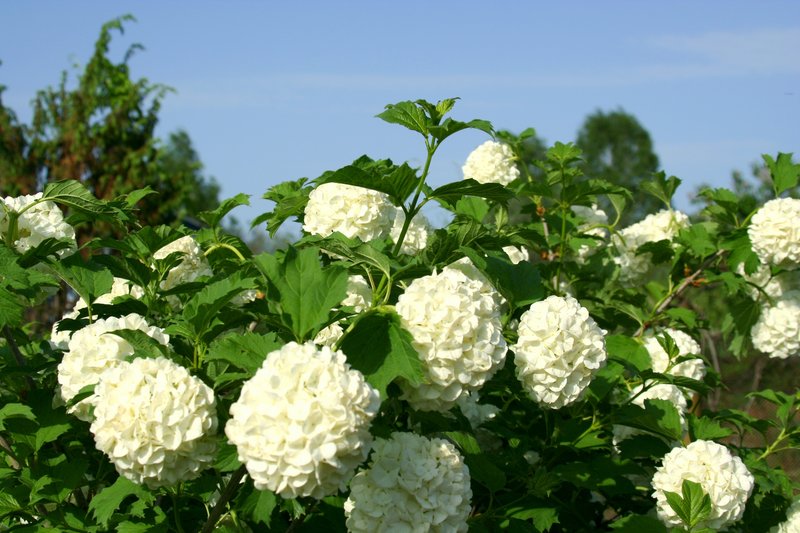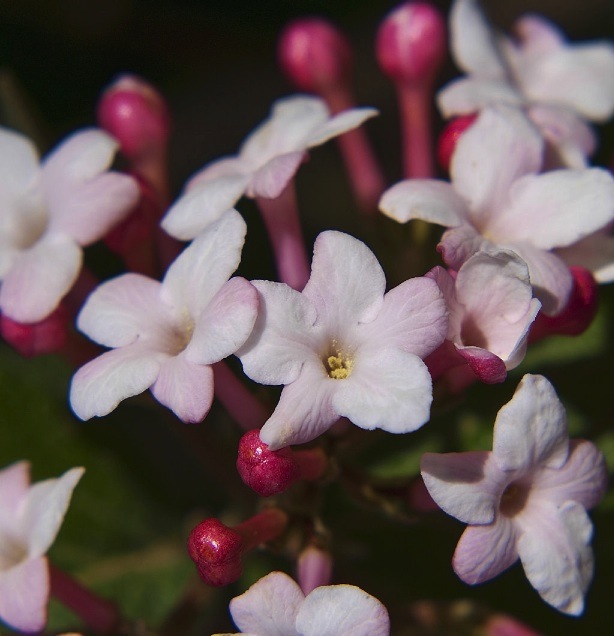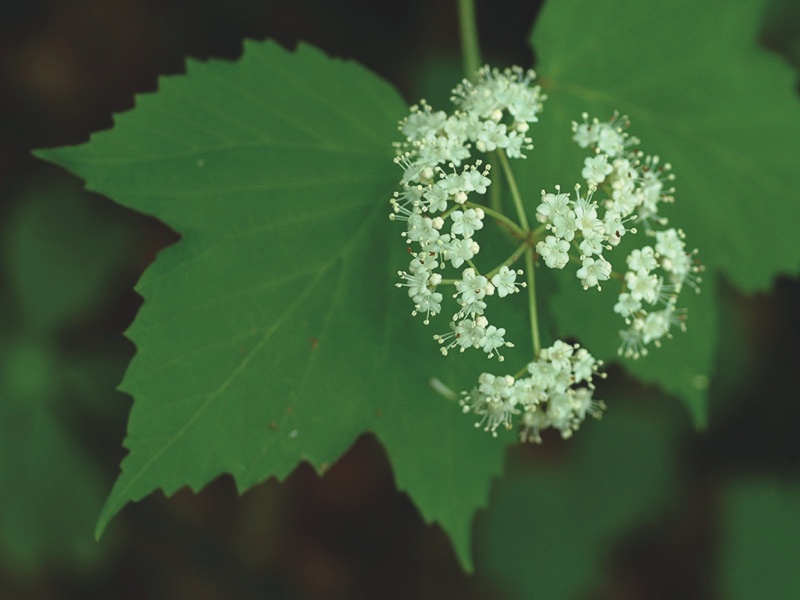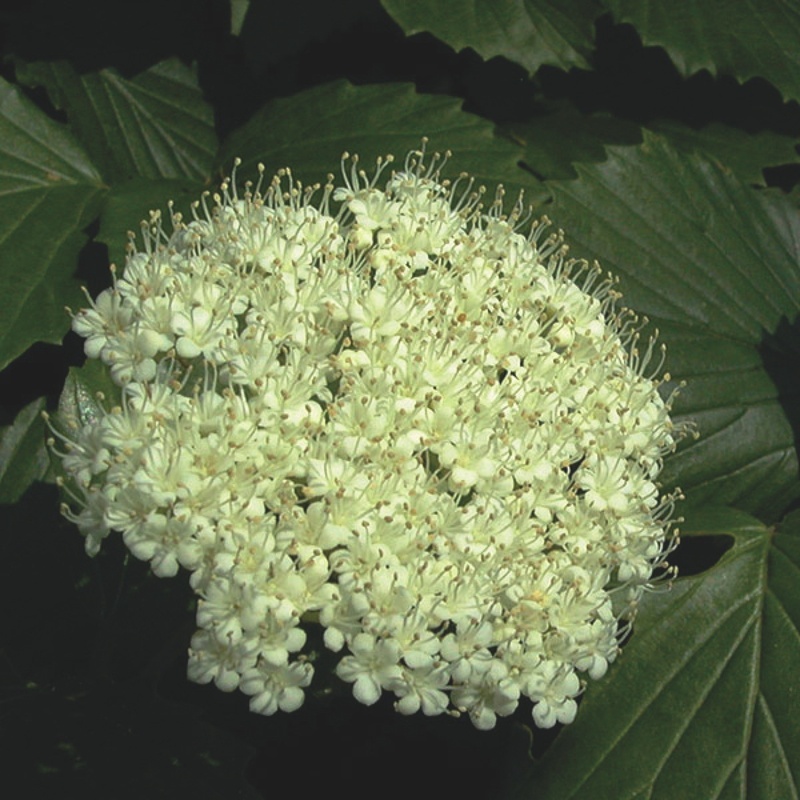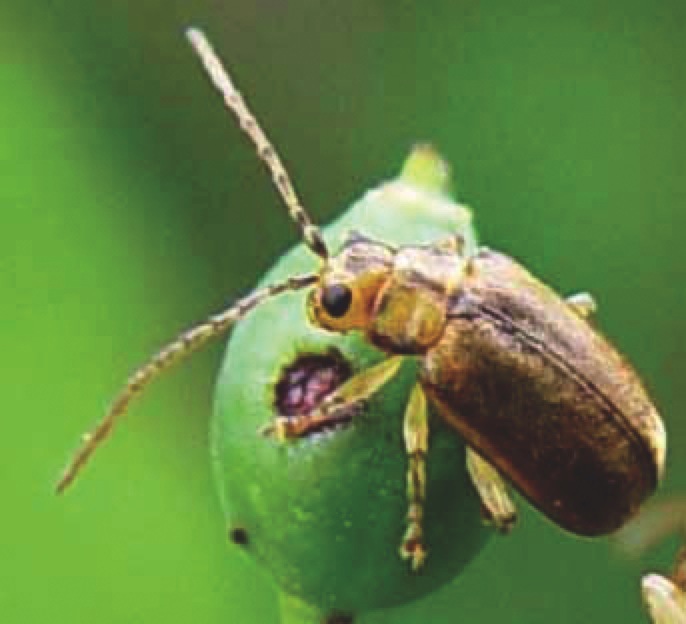The viburnum is an almost perfect plant species.
“They offer a lot of interest through multiple seasons,” said Tim Bate, nursery manager at Skillin’s Greenhouse in Falmouth. “They flower in the spring, and some of them are fragrant. Some of the varieties produce fruit, which is great for enticing wildlife to your yard. And some of them offer the aspect of fall foliage as well.”
Most viburnum flowers are white, but they offer some variety.
“Some flowers show an umbrella-shaped inflorescence with fertile florets at the center,” said Marjorie Peronto, an extension educator working in Hancock County who wrote several extension bulletins about native viburnums. “In some, like the Viburnum trilobum or highbush cranberry, that structure is rimmed with sterile flowers and is much more showy.”
Not all the viburnums you find at your local nursery will be natives, but many of the natives are commonly for sale. And even the plants that are not native are well-behaved, meaning that they will not escape the home garden and compete with native plants. The fruit of viburnums also provide food for wildlife.
The big threat to viburnums is the viburnum leaf beetle, which arrived in North America in 1978. The beetle eats viburnum leaves in both its larval and adult stages, often stripping the plants naked and, after a few years, killing them.
That doesn’t mean you have to give up on viburnums. Many varieties are resistant to the beetle, and with the others, you can fight the beetle with just a bit of vigilance and without resorting to chemical pesticides.
“The beetle, at a certain time of late summer or fall, lays eggs underneath the bark of tips of branches,” Peronto said. “It lays them in a line. Once leaves fall off in fall, if you check the branch tips and know what to look for, you can prune them out.”
The best way to know what to look for, Peronto said, is to go to Cornell University’s Citizen Science website on viburnum leaf beetles (www.hort.cornell.edu/vlb) and look for the pictures.
Peronto listed six viburnums that are Maine natives: viburnum dentatum, also called the arrowwood viburnum; viburnum cassanoides or witherod viburnum; viburnum opulus trilobum or highbush cranberry; viburnum acerifolium or mapleleaf viburnum; viburnum alnifolium or hobblebush; and the viburnum lentago or nannyberry.
The mapleleaf viburnum and the hobblebush are difficult to find in most nurseries, but are available in specialty nurseries. And the highbush cranberry, while very attractive, is one of the most susceptible to the viburnum leaf beetle.
Bate likes the blachaw viburnum, or viburnum prunifolium, a U.S. native that Peronto didn’t mention.
“That is a good one for fruit and foliage, and it has some resistance to the viburnum leaf beetle,” he said.
Other popular natives are the viburnum nudum varieties “Brandywine” and “Winterthur,” which are related to the witherod viburnums and are resistant to the beetle.
The viburnums you are going to see in most home gardens are the imports.
Viburnum carlesii, called the Koreanspice or Mayflower viburnum, is highly fragrant with light pink to white flowers in the spring, and is also highly resistant to the beetle.
Another popular import is viburnum plicatum tomentosum, in such varieties as “Shasta,” “Molly Schroeder” and “Summer Snowflake,” all of which are beetle resistant. “Shasta” especially has a wonderfully horizontal branching habit, large white flowers and a wonderful red fall foliage.
Viburnums don’t need deadheading of spent blossoms because you want to encourage the berries, and won’t need pruning unless you planted one in a space that is too small for it. In that case, follow standard pruning practices of cutting back to branch forks and cutting less than a third of the plant each year. The pruning should be done shortly after the flowers go by.
When picking a viburnum, people should either talk to professionals at a nursery or go online to pick the right plant for their site. Some can stand wet soils, while others need it dry. Some can thrive in fairly deep shade; some need full sun.
But if you pick the right one for your site, it is a plant you can enjoy for decades.
Tom Atwell can be contacted at 791-6362 or at
tatwell@pressherald.com
Send questions/comments to the editors.

